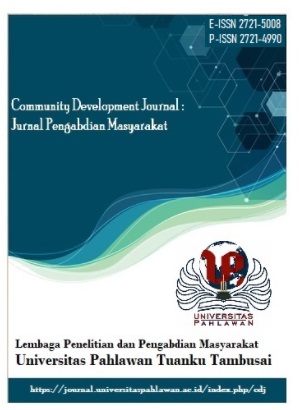CRITICAL DISCOURSE ANALYSIS ON ONLINE NEWS TEXT OF PUBLIC FIGURES DURING COVID-19 PANDEMIC IN INDONESIA
DOI:
https://doi.org/10.31004/jrpp.v7i1.25744Keywords:
Critical Discourse Analysis, Online News Text, Public Figures, Covid-19Abstract
This study set out to describe the format of news articles regarding prominent celebrities that hosted big crowds of their fans during the COVID-19 pandemic on detiknews.com and anteraceh.com. Using a qualitative research method was the approach taken in this study. Detik and Anteroaceh, which were both online, were used to gather the data. The news article's headline read: “Jejak Kasus Picu Kerumunan Selebgram Herlin Kenza hingga Jadi Tersangka”, “Kerumunan saat selebgram ini tiba di Lhokseumawe langgar PPKM, Satgas Covid ; kami tidak tau”, and “Selebgram Herlin Kenza divonis bersalah kasus kerumunan, Jaksa : Tak bayar denda, penjara 2 bulan” This study looked at the events that made Herlin Kenza a well-known public figure and led to large gatherings of people during the Corona virus outbreak. The three-dimensional structures text in CDA established by Teun A. van Dijk method, which comprises of micro structure, macro structure, and super structure, was used in the current study.. The results demonstrated that the first and second news of the public figure "Herlin Kenza" contain thematic and topical aspects in a micro structure that demonstrates the public appeals made. Superstructure is a term used to describe the way the scheme is used to structure the news. The primary actor, Herlin Kenza, is indisputable, but there will be a sizable number of people present in the crowds. The macro structure, on the other hand, comprises of semantics with background, detail, and intent elements that describe the events and context of the story of Herlin Kenza, who drew a large crowd during the COVID-19 pandemic.References
Andrews, S. J. (2017). Hegemony, mass media, and cultural studies: Properties of meaning, power, and value in cultural production. Rowman & Littlefield International.
Bulan, A., & Kasman, K. (2018). Critical Discourse Analysis of Ahok’s Speech in Kepulauan Seribu. Transformatika: Jurnal Bahasa, Sastra, Dan Pengajarannya, 2(1), 50.
Dennison Himmelfarb, C. R., & Baptiste, D. (2020). Coronavirus disease (COVID-19): Implications for cardiovascular and socially at-risk populations. The Journal of Cardiovascular Nursing, 35(4), 318-321.
Fairclough, N. (1992). Discourse and Social Change. Cambridge: Polity Press.
Fairclough, N. 1995. Critical Discourse Analysis: The Critical Study of Language. London, New York: Longman.
Gandasari, D., & Dwiedinawati, D. (2020). Content analysis of social and economic issues in Indonesia during the COVID-19 pandemic. Heliyon, 6(11), e05599.
Hamuddin, B. (2015). DISCOURSE ON MEDIA: Bringing Hot News into ELT’s Classroom Discussion. Proceedings of ISELT FBS, 87–95.
Widiastuti. (2020). a Critical Discourse Analysis of Mohamad Nasir’S Speech. BAHTERA: Jurnal Pendidikan Bahasa Dan Sastra, 19.
Van Dijk, T. A. (1993). Principles of critical discourse analysis. Discourse and Society. Journal of Pragmatics, 4(2), 249–283.
Downloads
Published
How to Cite
Issue
Section
License
Copyright (c) 2024 Muhammad Rafii

This work is licensed under a Creative Commons Attribution-ShareAlike 4.0 International License.






